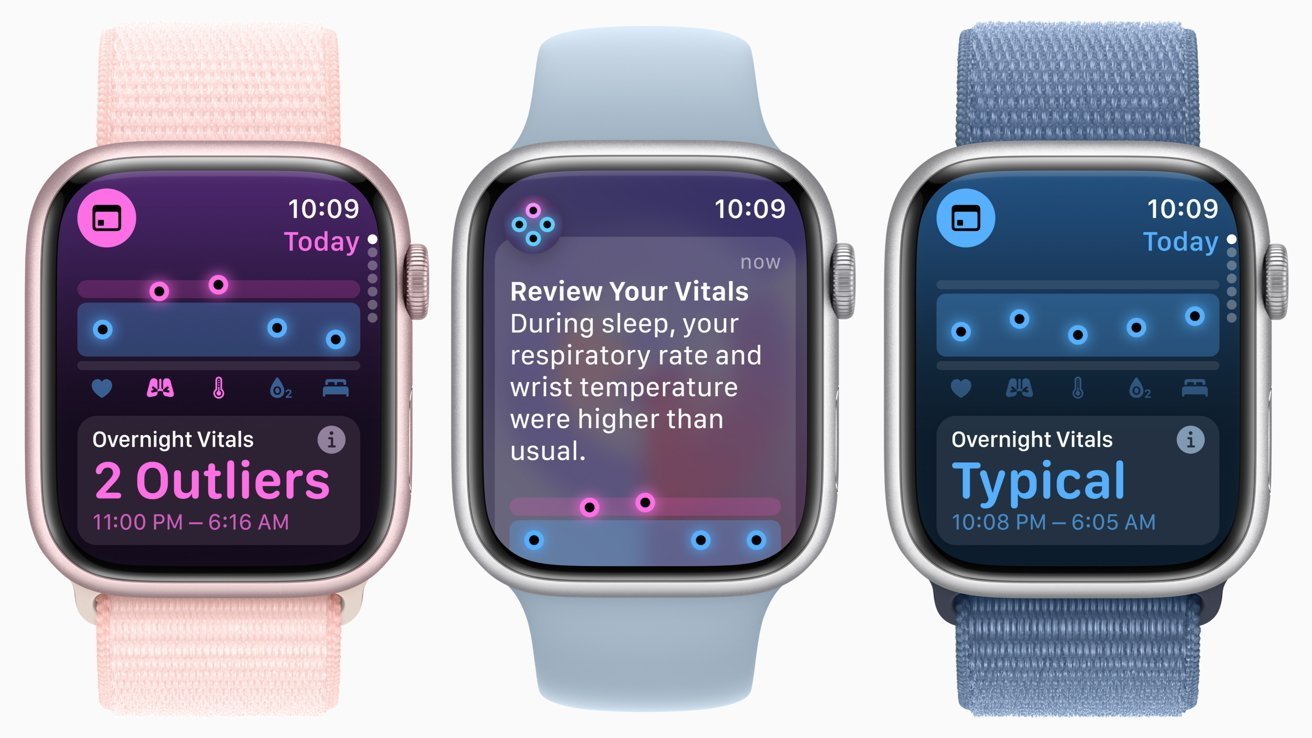Apple Watch users will benefit from the Vitals app in watchOS 11, Apple’s VP of Health has said, but it’s something that will only really be useful when you sleep.
Apple has provided limited sleep tracking in the Apple Watch for a few years, as part of its overall health and wellbeing offering. However, in watchOS 11, a new addition will require users to wear the Apple Watch as they slumber to get a better reading of their health.
In an interview with CNET, Apple VP of Health Dr. Sumbul Desai explains how the Vitals app will provide a daily overview of a user’s health, as collected by the Apple Watch. This information will include things like sleep data, heart rate, respiratory rate, blood oxygen level, and skin temperature at rest when the user is asleep.
If the Apple Watch detects that multiple vital data points are out of line from the norm of the user, the app will alert the user. Sleeping is needed as daytime movement and stress can affect the measurements, whereas it can measure the “basal” state when the user is at rest.
“So much of your health is invisible,” Desai said. “This daily health status is almost like a little bit of a snapshot of your health overnight.”
Desai says that the average Apple Watch user will need to make a behavior change and sleep while wearing the device. “To make your Apple Watch data work for you, you’ll need to sleep with it,” she insists.
The snapshot won’t necessarily offer a user distinct values or a score but instead how a user’s state compares to a baseline. “We compare you against you,” Desai proposes.
Everyday changes
The whole point of Vitals is to indicate when a user has changed their lifestyle from the norm or that their body is doing something outside of the norm. For example, someone who drank alcohol could be warmer overnight, or eliminating caffeine could lower their heart rate, along with being sick in some situations.
The app uses data that was collected in the ongoing Heart and Movement Study, an Apple project with the American Heart Association and Harvard’s Brigham and Women’s Hospital. Data points observed in the study informed how the Vitals app reacts to changes.
“We don’t say ‘You need to go to a doctor,'” Desai insisted about the notifications. “We’re really thoughtful about not unnecessarily queueing you to go to the doctor.”
“We thought trough really carefully, when do we want to notify you, and how do we want to notify you,” she added. “We want to make sure when we notify you it’s for a meaningful reason and its actionable.”
Users will be able to try out the Vitals app as part of watchOS 11, which will be released to the public in the fall.





